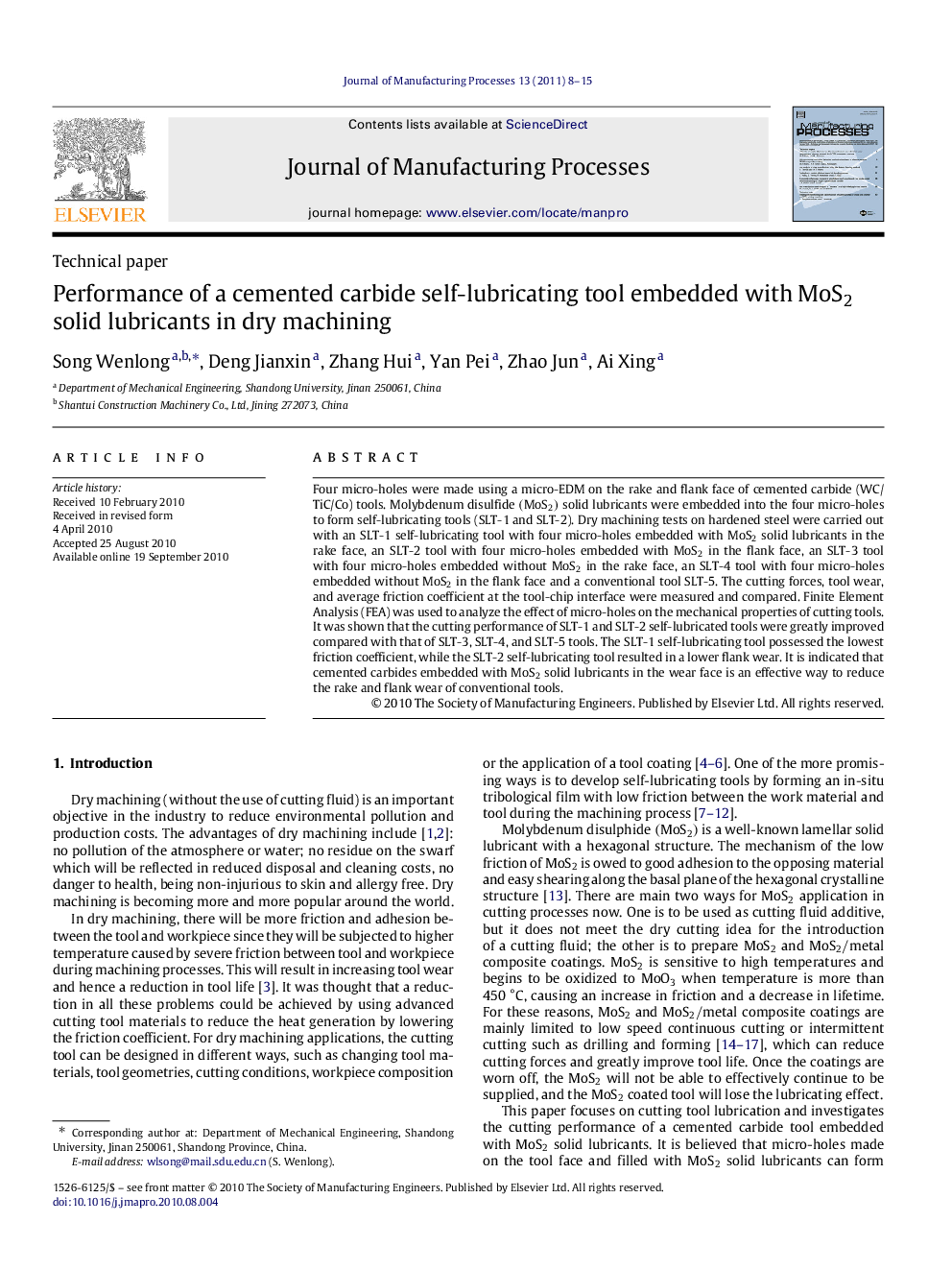| Article ID | Journal | Published Year | Pages | File Type |
|---|---|---|---|---|
| 1697235 | Journal of Manufacturing Processes | 2011 | 8 Pages |
Abstract
Four micro-holes were made using a micro-EDM on the rake and flank face of cemented carbide (WC/TiC/Co) tools. Molybdenum disulfide (MoS2) solid lubricants were embedded into the four micro-holes to form self-lubricating tools (SLT-1 and SLT-2). Dry machining tests on hardened steel were carried out with an SLT-1 self-lubricating tool with four micro-holes embedded with MoS2 solid lubricants in the rake face, an SLT-2 tool with four micro-holes embedded with MoS2 in the flank face, an SLT-3 tool with four micro-holes embedded without MoS2 in the rake face, an SLT-4 tool with four micro-holes embedded without MoS2 in the flank face and a conventional tool SLT-5. The cutting forces, tool wear, and average friction coefficient at the tool-chip interface were measured and compared. Finite Element Analysis (FEA) was used to analyze the effect of micro-holes on the mechanical properties of cutting tools. It was shown that the cutting performance of SLT-1 and SLT-2 self-lubricated tools were greatly improved compared with that of SLT-3, SLT-4, and SLT-5 tools. The SLT-1 self-lubricating tool possessed the lowest friction coefficient, while the SLT-2 self-lubricating tool resulted in a lower flank wear. It is indicated that cemented carbides embedded with MoS2 solid lubricants in the wear face is an effective way to reduce the rake and flank wear of conventional tools.
Related Topics
Physical Sciences and Engineering
Engineering
Industrial and Manufacturing Engineering
Authors
Song Wenlong, Deng Jianxin, Zhang Hui, Yan Pei, Zhao Jun, Ai Xing,
